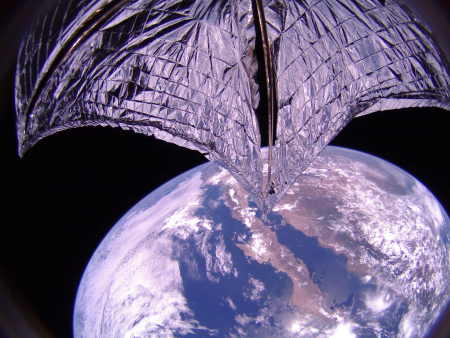Capitalism in space: Yesterday NASA announced a bunch of partnership agreements with thirteen companies, where those companies will get NASA assistance at no cost to help them develop new engineering that would aid future solar system exploration.
The partnerships covered everything from helping small companies develop new space electronics, heat shields, and new types of thrusters to helping Blue Origin develop the technology for for landing on the Moon.
An article at Ars Technica today about this NASA announcement focused specifically on the SpaceX deal, mainly for its important political implications.
The partnership will have two different NASA agencies helping SpaceX develop the refueling technology it needs for Starship to reach Mars. The key is that this deal has NASA openly supporting technologies that are in direct competition with its own SLS rocket. When such research work was proposed back in 2010, it was opposed quite strongly by past agency officials as well as powerful politicians in Congress, for exactly that reason.
It was a contentious time in space policy, as the White House was pushing for more funding for new space companies—and new space ideas such as fuel-storage depots—while Congress wanted to keep NASA in the rocket-building business.
Eventually, Congress got the upper hand, putting NASA on track to build the large SLS rocket at a development cost of more than $2 billion a year. The rocket program mostly benefited the Alabama space center and was championed by Alabama State Senator Richard Shelby. The potential of in-space fuel storage and transfer threatened the SLS rocket because it would allow NASA to do some exploration missions with smaller and cheaper rockets. As one source explained at the time, “Senator Shelby called NASA and said if he hears one more word about propellant depots he’s going to cancel the Space Technology program.”
The line from other NASA officials was that as a technology, propellant depots were not ready for prime time. In 2011, former NASA Administrator Mike Griffin and current Executive Secretary of the National Space Council Scott Pace—both SLS advocates—wrote a withering criticism of the technology for Space News.
Now however the Trump administration is helping SpaceX develop refueling for Starship, which if successful will help make SLS irrelevant. This is more evidence that the Trump administration is laying the political groundwork that will allow it to shut SLS down, actions that were impossible in the political culture of Washington only two years ago.
This quote in the article is probably the most startling of all:
“Administrator Bridenstine is clearly executing on President’s Trump’s guidance to increase commercial public-private-partnerships at NASA,” Miller, now chief executive of UbiquitiLink, told Ars. “The game-changing technology that NASA has discovered is capitalism. This program proves NASA leadership has figured out the future is reusability mixed with commercial public-private-partnerships.” [emphasis mine]
Imagine that. An American government agency has learned that capitalism is the way to go. Will wonders never cease?
Update: See this related Ars Technica article: The SLS rocket may have curbed development of on-orbit refueling for a decade (Hat tip reader Calvin Dodge.)

